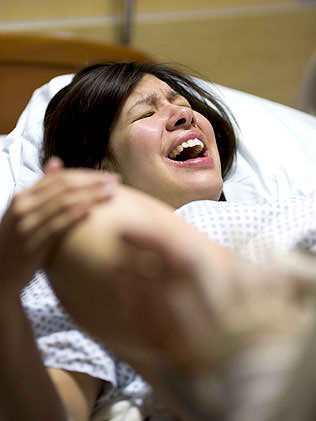
The first baby was born before the medics or highway patrol arrived and was grayish-blue with no signs of breathing. He was revived by infant CPR but was still struggling breathing when a State Trooper arrived. The State Trooper used the suction tool to clear the baby’s nose and mouth and was given oxygen. Hales began to labor for the second baby when the first baby began breathing on his own. The second baby came out feet first but was breathing normally. The ambulance arrived just as the State Trooper was cutting the umbilical cord. Although the babies are to remain in intensive care for several weeks, they are expected to be fine.
Pregnancy is always a blessing to anyone. The soon to be bundles of joy always present worrisome but pleasant change to the parents-to-be. Pregnancy typically lasts for 40 weeks. By this time, the fetus has developed the vital organs it needs to survive outside the uterus. Preterm birth can pose serious health problems or may even be fatal for the baby. Premature babies may have problems breathing, are at greater risk for brain hemorrhage and infection, and may have problems in the nervous system and gastrointestinal tract. This may also connote to underdeveloped kidneys, liver and lungs.
Sometimes, emergency childbirth is not preventable. After calling for emergency medical services and waiting for their arrival, the primary role is to support the mother and keep her calm by ensuring her that medical help is notified. While waiting for the ambulance and if the mother is in her early stages of labor, support the mother into a position that is most comfortable to her. Ask her what you as the rescuer can do to alleviate pain. Encourage her to exhale, as holding the breath makes the pain worse by adding muscle tension.
If labor is in its second stage, make sure that the woman has removed all her clothes in the lower part of her body. Make sure that the rescuer and the environment are as clean as possible. Place a warm blanket to cover the mother and baby. Assist the mother into a position most comfortable to her. As the mother pushes out the baby and as it descends, support the mother. As the baby’s head and shoulders appear, make sure it is supported by the rescuer. Do not pull the baby. Ensure that the cord is not wrapped around the neck and if it is, check if it is loose and gently pull it over the baby’s head. Gently lift the baby and put on the stomach of the mother. The cord need not be cut. If there are no signs of movement on the baby, check airway and breathing and commence CPR if there is no breathing and circulation. Ensure that the baby and mother are kept warm while waiting for the emergency medical help to arrive. Keep the placenta and cord to be given to the medical staff. To help stop the bleeding, gently massage below the navel.
These emergency situations do not often happen. However, if they do, it is a medical emergency and may lead to fatalities of two people, the mother and child. workplace approved programs offer Standard First Aid courses that will teach non-medical rescuers how to help in cases emergencies such as these arise.
